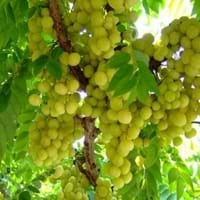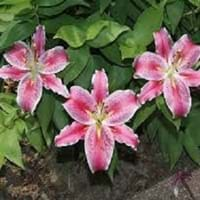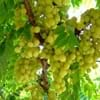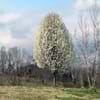Life Span
Perennial
Perennial
Type
Fruit, Tree
Bulb or Corm or Tuber
Origin
Not Available
Hybrid origin
Types
Not Available
Oriental White
Pink Oriental
Light Pink Oriental
Red Oriental
Number of Varieties
Not Available
Habitat
Forests, gardens, Hill prairies, Homesteads, Rocky areas, Woodlands
gardens, Tropical regions
USDA Hardiness Zone
Not Available
4-8
AHS Heat Zone
Not Available
8-1
Sunset Zone
Not Available
21,22
Habit
Bushy, Evergreen
Upright/Erect
Flower Color
Light Green, Lime Green
Pink, Magenta, Rose
Flower Color Modifier
Not Available
Bicolor
Fruit Color
Green, Light Green
Green, Sandy Brown
Leaf Color in Spring
Yellow, Green, Gray Green
Green
Leaf Color in Summer
Light Green
Light Green
Leaf Color in Fall
Yellow, Green, Gray Green
Several shades of Green
Leaf Color in Winter
Yellow, Green, Gray Green
Light Green
Leaf Shape
Ovate
Heart-shaped
Plant Season
Spring, Summer, Fall, Winter
Summer
Sunlight
Full Sun, Partial Sun, Partial shade
Full Sun, Partial Sun
Type of Soil
Loam, Sand
Clay, Loam, Sand
The pH of Soil
Acidic, Neutral, Alkaline
Neutral
Soil Drainage
Well drained
Average
Bloom Time
Early Summer, Summer, Late Summer, Early Fall
Summer
Tolerances
Pollution, Salt, Soil Compaction
Drought
Where to Plant?
Ground
Ground, Pot
How to Plant?
Seedlings, Stem Cutting, Stem Planting
From bulbs, From Rhizomes, Stem Planting
Plant Maintenance
Low
Medium
Watering Requirements
Keep ground moist, Requires regular watering, Use Mulches to help prevent water loss during hot and windy weather
Keep the ground moist but not water-logged, Water more in summer, Water when soil is dry
In Summer
Lots of watering
Lots of watering
In Spring
Moderate
Moderate
In Winter
Average Water
Average Water
Soil pH
Acidic, Neutral, Alkaline
Neutral
Soil Type
Loam, Sand
Clay, Loam, Sand
Soil Drainage Capacity
Well drained
Average
Sun Exposure
Full Sun, Partial Sun, Partial shade
Full Sun, Partial Sun
Pruning
Cut or pinch the stems, Do not prune during shooting season, Remove deadheads
Remove damaged leaves, Remove dead branches, Remove dead leaves
Fertilizers
High Potash Fertilizer
All-Purpose Liquid Fertilizer
Pests and Diseases
Bacterial Blight, Foliage-feeding caterpillars, Moth
Red blotch
Plant Tolerance
Pollution, Salt and Soil Compaction
Drought
Flower Petal Number
Single
Single
Foliage Texture
Fine
Medium
Foliage Sheen
Matte
Glossy
Attracts
Caterpillar
Butterflies, Hummingbirds
Allergy
Skin irritation
Asthma
Aesthetic Uses
Not Used For Aesthetic Purpose
Beautification, Bouquets
Beauty Benefits
Blood purifying, Glowing Skin, Good for skin and hair, Provides herbal hair care, Speed hair growth
Not Available
Environmental Uses
Air purification, soil stabilisation
Air purification
Medicinal Uses
Atherosclerosis, Cancer, Diabetes, Diarrhea, High blood pressure, High cholestrol, Obesity, Vitamin C
Cough, Fever, Stomach pain, tuberculosis
Part of Plant Used
Fruits
Flowers, Leaves
Other Uses
Making Shampoo, Used for its medicinal properties, Used in herbal medicines
Making Perfumes, Showy Purposes, Use in Chinese herbology, Used as Ornamental plant, Used for fragrance
Used As Indoor Plant
No
Yes
Used As Outdoor Plant
Yes
Yes
Garden Design
Cottage garden
Container, Cutflower, Mixed Border
Botanical Name
Phyllanthus acidus
LILIUM 'Acapulco'
Common Name
Tahitian gooseberry, country gooseberry, star gooseberry, starberry, grosella
Acapulco Oriental Lily, Oriental Lily
In Hindi
ताहितियन आमला
ओरिएंटल लिली
In German
Tahitian Stachelbeere
Orientalische Lilie
In French
Tahitian Gooseberry
Lily Oriental
In Spanish
Tahitian grosella espinosa
lirio oriental
In Greek
Tahitian Φραγκοστάφυλο
Oriental Lily
In Portuguese
Tahitian Gooseberry
Lily Oriental
In Polish
Tahitian agrest
Oriental Lily
In Latin
Tahitian Gooseberry
Oriental Lily
Phylum
Magnoliophyta
Not Available
Class
Magnoliopsida
Not Available
Order
Malpighiales
Liliales
Family
Phyllanthaceae
Liliaceae
Clade
Angiosperms, Eudicots, Rosids
Angiosperms, Monocots
Tribe
Phyllantheae
Lilieae
Subfamily
Not Available
Lilioideae
Number of Species
Not Available
Season and Care of Tahitian Gooseberry and Oriental Lily
Season and care of Tahitian Gooseberry and Oriental Lily is important to know. While considering everything about Tahitian Gooseberry and Oriental Lily Care, growing season is an essential factor. Tahitian Gooseberry season is Spring, Summer, Fall and Winter and Oriental Lily season is Spring, Summer, Fall and Winter. The type of soil for Tahitian Gooseberry is Loam, Sand and for Oriental Lily is Clay, Loam, Sand while the PH of soil for Tahitian Gooseberry is Acidic, Neutral, Alkaline and for Oriental Lily is Neutral.
Tahitian Gooseberry and Oriental Lily Physical Information
Tahitian Gooseberry and Oriental Lily physical information is very important for comparison. Tahitian Gooseberry height is 800.00 cm and width 400.00 cm whereas Oriental Lily height is 38.10 cm and width 60.00 cm. The color specification of Tahitian Gooseberry and Oriental Lily are as follows:
Tahitian Gooseberry flower color: Light Green, Lime Green
Tahitian Gooseberry leaf color: Yellow, Green and Gray Green
Oriental Lily flower color: Pink, Magenta and Rose
- Oriental Lily leaf color: Green
Care of Tahitian Gooseberry and Oriental Lily
Care of Tahitian Gooseberry and Oriental Lily include pruning, fertilizers, watering etc. Tahitian Gooseberry pruning is done Cut or pinch the stems, Do not prune during shooting season and Remove deadheads and Oriental Lily pruning is done Remove damaged leaves, Remove dead branches and Remove dead leaves. In summer Tahitian Gooseberry needs Lots of watering and in winter, it needs Average Water. Whereas, in summer Oriental Lily needs Lots of watering and in winter, it needs Average Water.





